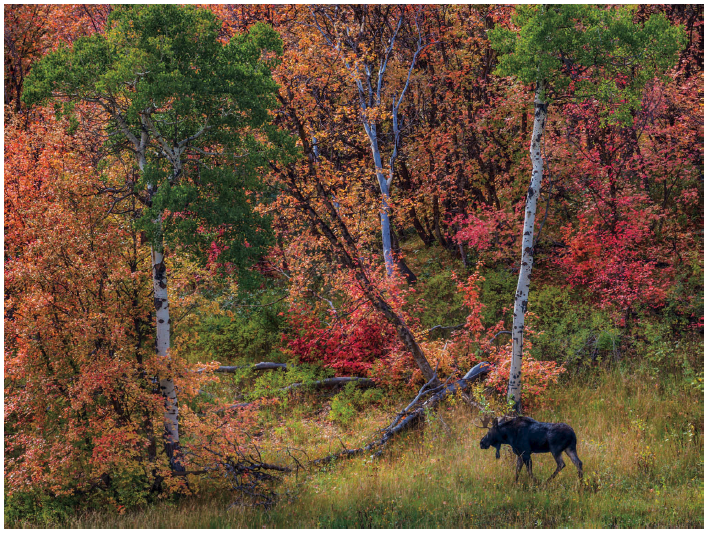The following is an excerpt from Guy Tal’s More Than A Rock, 2nd Edition.
Creative Blocks
Writer’s block is what you get if you’re trying to be Faulkner. You sit and stare at the wall and nothing will come. Once you come to your senses and accept who you are, then there’s no problem. I’m not Faulkner. I’m a late-middle-aged mid-list fair to- middling writer, and it gives me a lot of pleasure.
—Garrison Keillor
Few things are as troubling to a budding artist as experiencing prolonged periods when, no matter what we do or how hard we try, our work persistently fails to satisfy. Writers have been aware of this phenomenon for some time and even coined a term for it—writer’s block—although such dry spells are certainly not unique to writers. This is why I prefer the term creative block.
Experienced artists generally are not as perturbed by such blocks, recognizing their cyclical nature and having learned to persevere through them, trusting that inspiration will return in due time. Still, even the most savvy artists and authors may at times find themselves spiraling into depression when such blocks persist for prolonged periods.
Creativity is a complex subject and one not yet fully understood, making the causes of creative blocks a matter of some speculation. Any number of factors can contribute to them, ranging from external demands and distractions to internal states of mind. Whatever the cause, creative blocks are very real and very common, and may even be unavoidable. A variety of remedies for creative blocks have been proposed over the years, indicating two truisms about them: a) there is no known guaranteed solution, and b) different situations and different personalities may require different approaches.

While an absolute solution to creative blocks is not known, one thing can be stated with certainty: the worst thing you can do when feeling “blocked” is to exacerbate the situation. As many thinkers noted, we may not be in control of what happens to us, but we are in control of how we respond to it. In any such situation, two things worth resisting consciously are anxiety and panic. To do so, remind yourself that creative blocks happen to everyone, and they are temporary in nature. Rather than trying to force yourself to be creative (an endeavor almost guaranteed to fail), consider using this down time in more productive ways, and have faith that in time the muses will again find you.
While I don’t know of a fail-safe solution to creative blocks (nobody does), I will share here what usually works for me. I’ll start with an observation from John Stuart Mill, who said, “No great improvements in the lot of mankind are possible, until a great change takes place in the fundamental constitution of their modes of thought.” Indeed, given that creative blocks originate in the mind, it is safe to say that their solution is to be found there, too.
The longer I live as an artist, the more I come to realize that making art is most rewarding not because of the art, but because of the making. My observation is that creativity begets creativity, and productivity begets productivity. The more you do something, especially something novel and complex, the easier it will be to do it again. By this I don’t mean rehashing work already completed, but rather exercising the skills and cognitive processes employed in the making of creative work. Shifting focus to the process, rather than the products, of artmaking is not an intuitive approach, yet it comes with many advantages. For starters, if you find the process rewarding, you will enjoy what you do whether the outcome is good or bad, and even if you fail on occasion. More to the point, with constant repetition of the process, regardless of whether the outcome is successful, you are exercising your “creative muscle.” In time and with repetition, the mechanics of creative work become intuitive—you are literally reconfiguring the physical structure of your brain in ways that are conducive to desirable thought patterns (this ability to “rewire” your brain is known as plasticity).
Much like the body, a creative mind that is exercised regularly will perform better and more consistently. When training the body, sometimes we run on a treadmill, going nowhere, and sometimes we hike a challenging trail to get to a magnificent view, but in both cases we are keeping ourselves in shape. Likewise, when feeling blocked, take some time to get in better creative shape, whether or not you produce anything of value. Go for a walk and imagine possible compositions of things you may never photograph, peruse a book or a website containing photographs that inspire you and consider how they differ from the way you may have chosen to compose them, pick something and view it from different perspectives and challenge yourself to portray it in your mind’s eye in as many different ways as you can imagine, but without actually photographing it.
Cognitive exercise, like physical exercise, is demanding work, so also allow yourself time to rest and recuperate. Rather than becoming locked into a specific way of seeing, train your brain to approach things creatively and don’t tax it by pushing it too hard. In time, you will begin to see possible ways out of the creative block. These may not always be in the form of strokes of insight, but may well get you another step or two further down the path to feeling creative again.
